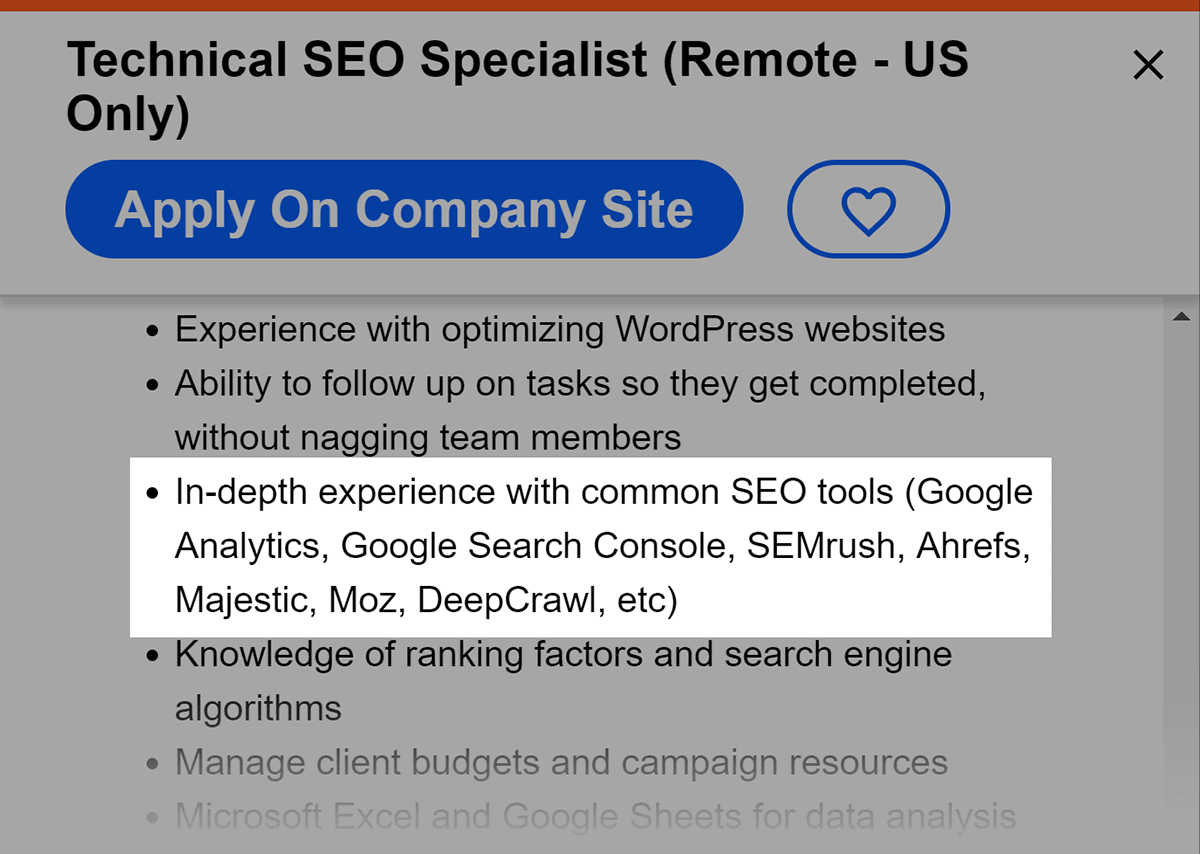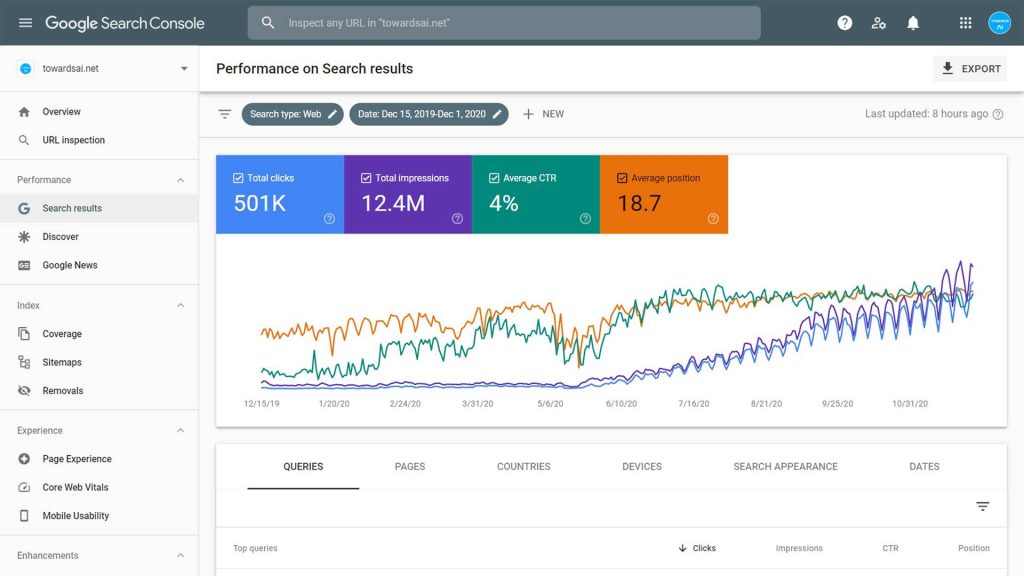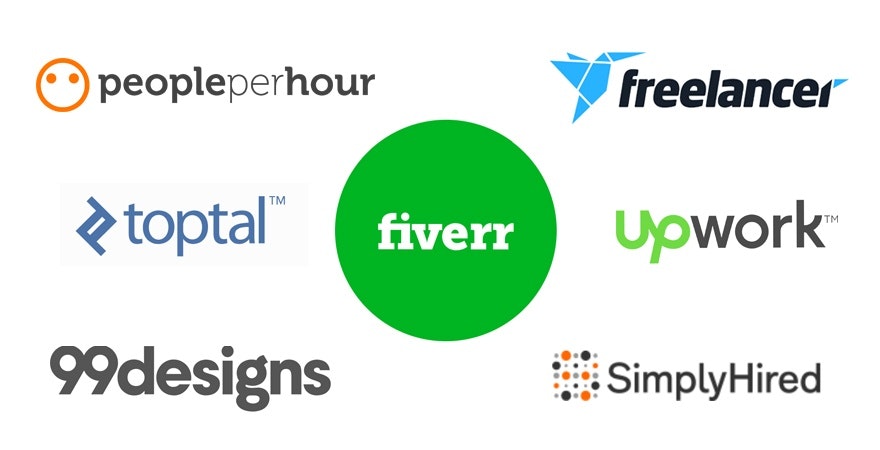Making a freelancer portfolio from scratch as an SEO specialist

Learn how to create your freelancer portfolio of an SEO freelancing specialist from the beginning. In this article, you’ll discover the sources of information gathering, how to examine the effectiveness of SEO, and how to use your freelancer portfolio.
Want to get the most out of your time?
Try DeskTime for free!
Try free for 14 days · No credit card required.
By signing up, you agree to our terms and privacy policy.

Many SEO specialists choose to freelance as it gives them more freedom and flexibility. A freelancer is self-employed, is not dependent on a particular location or company, and can participate in projects selected for personal interest.
Every freelancer needs to have a portfolio with examples of work and results achieved. It helps to demonstrate one’s experience to potential clients and increase their level of trust.
How does an SEO specialist get started in freelancing? This article will guide you by creating a freelancer portfolio from scratch and describing which tools to use for website analysis and which metrics to add to freelancer portfolio examples.
Table of contents:
- How to build a freelance portfolio as a beginner SEO specialist?
- What to add to your freelance portfolio case studies?
- Where to gather information for your SEO work examples?
- How to track SEO effectiveness in analytics tools?
- How to use your freelance portfolio?
- Conclusion on building your freelance SEO specialist portfolio
How to build a freelancer portfolio as a beginner SEO specialist?
Beginner freelancers in SEO can be divided into two categories:
- Specialists who have previously performed similar duties in the office
- Beginners with theoretical knowledge but no practical experience
Let’s look at how to create a freelancer portfolio in each case.
Building a freelancer portfolio when you have some experience
If you’re an SEO specialist with some practical background in the field, building a freelancer portfolio is easier than if you only have theoretical knowledge.
- You have worked as an SEO expert for a company
Many large companies or agencies have their promotion team in which an SEO expert is responsible for page positions in Google and organic website traffic. Working with a large-scale project over a long period allows different testing strategies and spending a lot of time on analytics. For a specialist, this is a valuable experience worth demonstrating to clients.
What to add to your freelancer portfolio in such a case?
Only one case can be obtained from one site. So, it’s worth making each of your freelancer portfolio entries as comprehensive and informative as possible, even if there are only a few projects there.
- You have worked in an SEO agency together with other experts
Such agencies usually have several SEO specialists working on projects simultaneously, and successful project deliverables, in this case, are a collective achievement.
What to add to the freelancer portfolio, then?
Choose sites where all or most work has been entrusted to you and demonstrate what SEO efforts have led to a positive outcome.
Making a freelancer portfolio with no practical experience

Even if you don’t have any practical SEO experience yet, you can consolidate your knowledge and add a successful practical example to your freelancer portfolio. The SEO peculiarity is that the effect of optimization is evident only in months, unlike advertising in Google and social networks, web design, and other areas. With the right actions, the results can be obtained relatively quickly. If you can find a project to practice these skills, you will eventually have something to show to potential customers.
How to gain practical experience in SEO?
It’s difficult for a beginner in SEO to find a company that will trust its resources. Optimization mistakes can cause severe problems for the site, and the site owner doesn’t want to take the risk. But luckily for an SEO beginner, there are some alternatives.
1. Become an assistant to an experienced SEO specialist.
Many optimizers working in the office or remotely need an assistant to perform specific tasks. In this case, the beginner can observe, learn new things, and analyze the effectiveness of joint efforts.
2. Optimize small projects for free.
There are start-ups with limited budgets for promotion. Offer them your services for free or minimal compensation. This way, you’ll have an opportunity to practice skills and build up your freelance SEO portfolio.
What to add to your freelancer portfolio case studies?

Now, let’s see what data you should include in your SEO work examples.
- Website information
It is worth specifying the type of resource and its subject. Include the name of the company and a link to the website (but make sure you’re allowed to do it).
- Region for promotion
If you have experience in multi-lingual website optimization and promotion in different countries, make sure to mention it.
- Time on promotion
It’s good to mention the time spent on a project, so your future clients know what to expect.
- Optimization activities
List the strategic steps, which have been implemented, and problems on the site that were resolved.
- SEO efficiency
Each promotion channel has its own KPIs (Key Performance Indicator). It’s essential to reflect the dynamics of the parameters before and after optimization.
KPIs in SEO include:
- organic website traffic
- behavioral factors – session duration, bounce rate, etc.
- conversions (completed forms, completed applications, calls, orders).
Another basic indicator is the growth of a website’s positions by queries. During optimization, the specialist can monitor positions for many phrases. Since work examples on your freelancer portfolio should be concise and understandable to the client, the growth must be shown in brief.
- Benefits to the client company
To attract potential clients, show what benefits your work can bring. The best performance indicator is customer and buyer activity: increased orders, calls, and other marketing goals that the company has achieved due to SEO.
The impact of organic traffic on a company’s revenue is not always traceable. In that case, you can set up tracking in Google Analytics and see how many users from organic search have made a conversion.

Need the motivation to sort out your day?
Start using time management software!
How to make your SEO work examples more informative and attractive?
Here’s what you can add to the work examples on your freelancer portfolio:
- Numbers and percentages
Achievements in numbers look more convincing than in text. For example, it’s better to replace In several months, site traffic increased significantly with In 4 months, site traffic grew by 72%. Or instead of Site visibility has improved, use The site went into the top-10 for 32 popular requests and in the top-3 for 70% of them.
- Graphs and screenshots
Clear illustrations enhance the effectiveness of the text and attract attention. It’s worth adding charts and graphs to cases that demonstrate the positive dynamics resulting from optimization.
Where to gather information for your SEO work examples?

To demonstrate the effectiveness of SEO for a site, you need to:
- Analyze the site before and after optimization
- Trace the dynamics of the main KPIs (displays, traffic, user activity on the site)
- Examine the site positions for search queries
Several analytics tools can help you do this.
- Google Search Console
A service for site owners analyzes a website in terms of clicks and impressions in Google search results and provides information about parameters that serve as Google ranking signals, thus affecting the performance in organic search results: for example, load speed, adaptability for mobile devices, redirection errors, etc.
- Google Analytics
It’s a tool for analyzing the sources of traffic that drive users to your site and their subsequent actions on pages.
- SEO platforms
These are online tools designed for those involved in search engine optimization. They integrate statistics from major analytical resources.

Important: to access Google services, users must have verified rights. To avoid a situation when you need data for a case study but no longer have access to the site’s statistics, it’s worth monitoring the indicators and saving reports while optimizing each project.
How to track SEO effectiveness in analytics tools?
Now, let’s find out what helpful information you can get for cases using SEO analytics tools.
Google Analytics
The service’s on-page counter captures data on each visitor and their activity, from clicking on the page in Google to the moment they leave the site. In addition, Google Analytics has a Traffic Sources report, which provides statistics on all the channels visitors have come from over a given period, including organic search.
Let’s take a closer look at the metrics worth paying attention to.
Number of sessions
The system counts each visit as a session. The total number of sessions is website traffic. The growth of organic traffic is one of the main indicators of SEO effectiveness. The service allows you to see graphs that clearly show the dynamics of sessions and select a period for comparison.
User behavior on the website
User actions after they enter the site also indicate the effectiveness of optimization.
- The average duration of the session
It shows how long visitors spend on average on the site. If the parameter is low, this usually indicates that the site and its content do not meet users’ expectations. One of the tasks of an SEO expert is to analyze the queries in the subject and use the right keywords for promotion. For example, if the average session duration has increased due to optimization, this can be mentioned in the case.
- Bounce rate
If a user leaves your site after viewing only one page, such a session is considered a bounce. As with session duration, the bounce rate may be affected by page loading speed and site usability, as well as the selection of the right keywords.
If a site is optimized for queries with an intent that matches the resource’s subject matter, this leads to targeted traffic. When potential customers are interested in a product or service, they are more likely to stay on the site and interact with it.

Conversions
You can set up goals in Google Analytics — expected actions from website visitors once they’ve clicked through from search results, such as filling out a contact form, subscribing to newsletters, or ordering a product. If SEO has increased the number of visitors, that’s a plus for the case.
Google Search Console
The Efficiency report can show essential information for analyzing your optimization results. You’ll need to specify the period and region to retrieve the statistics.
Impressions
This parameter shows how many times a website was displayed in search results. If optimization is successful and keywords matching the target audience’s queries are used, the number of page displays in search results may significantly increase.
Clicks
It shows the number of clicks from Google, i.e., organic traffic. The parameter can be used as an alternative to the number of sessions in Google Analytics.
CTR
It is an indicator of page click-through rate (CTR) in search results, the ratio of clicks to displays. The CTR usually increases as a website ranks higher in search results because users are more likely to click on the top options.
Average position
Google Search Console calculates the index for the site as a whole and specific pages. All the URLs are displayed from it at different positions. Since general information is added to the case, an increase in the average position will indicate progress in the site’s overall visibility.

SEO platforms
What valuable data for your freelancer portfolio cases using SEO platforms like SE Ranking, SEMrush, Ahrefs, Moz, and others? Using an SEO platform, you can:
- do a comprehensive SEO audit of a website
- see the difference in performance before and after optimization
- monitor the position of the resource on request
- connect Google Search Console and Google Analytics and see all the statistics in one system.
By synchronizing with Google’s services, you can get information on organic traffic, displays, session duration, and other vital metrics for SEO listed above.
How to use your freelancer portfolio?

Once the examples of work are compiled, you can start looking for your first clients. Where to find them?
Freelance marketplaces
There are a lot of sites designed specifically for freelance-client matches. Fiverr, SimplyHired, 99Designs, Upwork, PeoplePerHour pay more attention to reviews, ratings, and payment security. Each specialist has a personal account where their freelancer portfolio is published. A good portfolio is one of the main factors of a freelancer’s success in the marketplace.
Note: I advise you to get a profile in at least five different freelance bureaus and always look for the people seeking SEO help. An SEO portfolio is a pleasant addition to your online CV.

B2B services and social networks
There are specific sites to find business partners. You can also use ordinary social networks by creating your business account. If website functionality doesn’t allow creating portfolios from your projects, you can upload examples of your work as separate files, such as Google Docs, and provide links to them.
Get a profile in at least five different freelance bureaus and always look for the people seeking SEO help. An SEO portfolio is a pleasant addition to a CV as well.
Conclusion on building your freelancer portfolio
For beginners, a freelancer portfolio is a way to present their experience and expertise and attract clients. Examples of SEO projects showcasing successful optimization outcomes help convince clients to entrust their websites to you.
When analyzing website metrics and their rankings, choose services that obtain all the necessary data and identify the dynamics of parameters important for SEO before and after optimization.
If you don’t have much practical experience in SEO, there are ways you can still get your first clients:
- Offer your SEO services for free.
- Make a sample website with evidence of your SEO operations.
- Get credentials or certificates from free SEO courses, digital marketing classes, and training.
Remember to check the relevance of your freelance SEO portfolio. Do not include unfinished or failed projects, and don’t exceed the limits – it’s better to show ten best cases than every SEO client.
This is a post by a guest author. Alina Tytarenko is part of the marketing team at SE Ranking. She shares her experience in marketing techniques, link building, content marketing, and SEO with readers.
Did you find this article useful? Give it a clap!
Psst! You can clap more than once if you really loved it 🙂